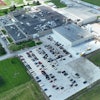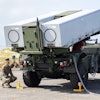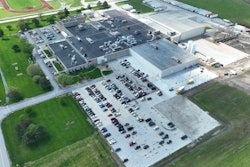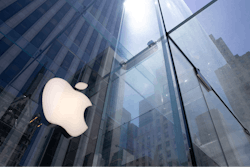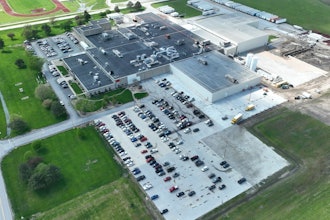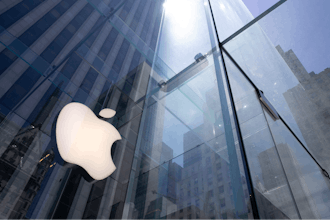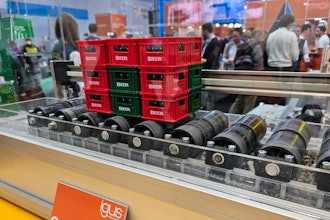 Imagine if an enterprise in the United States was able to access vital product line information of a subsidiary plant in India or a crank shaft supplier being able to locate its component in an automobile across the globe or a machine being to self-assemble at the end destination. Technology advancements over the last decade have paved the way for all of the above situations to be executed in repeatable fashion. In this article we will explore some of the key technologies disrupting manufacturing operations as we know them.
Imagine if an enterprise in the United States was able to access vital product line information of a subsidiary plant in India or a crank shaft supplier being able to locate its component in an automobile across the globe or a machine being to self-assemble at the end destination. Technology advancements over the last decade have paved the way for all of the above situations to be executed in repeatable fashion. In this article we will explore some of the key technologies disrupting manufacturing operations as we know them.
From “Data” to “Intelligence”
The advent of intelligent sensors and wireless technologies has paved the way for the Internet of Things (IoT) to gain wide recognition across a number of end user verticals. Although greater asset connectivity is poised to dissolve boundaries between individual units in the industry, the increase in data traffic has resulted in a push towards software tools for data management, visualization, and analytics. While integration and storage tools are essential to aggregate, analyze, integrate, and store diverse structured and unstructured data types, current business imperatives to optimize production operations in a cost effective manner have resulted in an upsurge in demand for analytical platforms to measure key performance indicators of mission critical operations. Apart from traditional analytical platforms that where built with diagnostic capabilities, the market is witnessing an influx of predictive and prescriptive analytics where predictive algorithms and pattern recognition allow end users to take corrective measures prior to failure.
From a manufacturing standpoint, the greatest impact is expected for repair and maintenance activities where personnel within the enterprise can take a proactive approach to minimize costs incurred due to downtime of operations. The compelling benefits of closing the data loop to provide real time business intelligence will further allow the enterprise to optimize inventory management, improve resource productivity, and validate system performance.
“Cloud” as an enabler
The power of cloud computing to connect a multitude of devices and platforms is yet another transformation that is not only impacting manufacturing facilities, but also the extended supply chain. In contrast to on-premise models, cloud based systems that have greater processing power allow the enterprise to pay a nominal fee to store large volumes of data. Furthermore, challenges such as accessibility are nullified as enterprises are no longer required to find suitable locations for servers and IT personnel need not worry about software updates. As traceability mandates become increasingly stringent across key vertical markets such as food & beverage, pharmaceutical and automotive owing to product recalls, contamination and counterfeits, a number of small and medium enterprises are leveraging cloud based technologies to monitor products across the value chain.
An example to illustrate the use of cloud in the food & beverage industry is the monitoring of time-critical perishable foods that have set temperature, pressure, and humidity requirements. From farm to fork, value chain participants can track the custody transfer at multiple points; be it at the manufacturing facility for batch verification, freshness, and ingredient control or at the retail store where products can be stocked based on shelf life. The ability of a diverse array of personnel to access information using smartphones not only stimulates high growth for cloud based technologies, but also gives rise to a new era of control-on-the go.
 Chart 1.2: Drivers for Mobility“Control-On-the-Go”
Chart 1.2: Drivers for Mobility“Control-On-the-Go”
As the perennial challenge of the aging workforce continues to plague the manufacturing industry, the ability to pass down manufacturing and operational intelligence to personnel at the shop floor is imperative. The penetration of smart phones and tablets in conjunction with cloud based technologies has created an avenue for solution providers to develop mobile solutions from their existing product portfolios. Furthermore, the ability for end users to deploy a cost-effective commercial tablet rather than an expensive industrial grade tablet not only reduces the cost of hardware and total cost of ownership but also provides end users with the capability to invest in a larger number of tablets improving response time, visibility, and accessibility of operations. From the shop floor all the wayto the C-level suite of the enterprise, using role based dashboards and interactive user interfaces, personnel can monitor and validate key performance indicators, such as line effectiveness, capacity requirements, utilization rates, and process efficiencies. The recent evolution of mobility through wearables reiterates the importance of enhanced visibility on the shop floor. End users can now integrate wearables like Google Glass with enterprise legacy systems to allow for real time data transfer between equipment operators, managers and almost any other personnel across the enterprise.
Reshaping the future, “3D to 4D Printing”
Manufacturing facilities are gradually witnessing an inflow of 3D printing techniques to improve production efficiencies by minimizing lead time for the manufacture of new parts. Although there is much debate on purchasing expensive state-of-the-art 3D printing equipment versus outsourcing to a service provider, application specific requirements such as volume, value, design database, material portfolio and engineering expertise are critical for end users in deciding the most apt business model. For example; for high value/low volume products in the medical industry, contracting a service provider would be a more viable solution as the enterprise can design a number of cost effective prototypes, select the best material fit and then decide whether to mass manufacture the product using traditional manufacturing techniques or using 3D printing technologies. As research and development (R&D) activities for new materials gain more traction, the market is witnessing a pronounced transition shift from 3D printing to 4D printing. 4D printing, that facilitates the manufacture of products that would have the potential to self-assemble or self–heal, is poised to disrupt a number of end user segments. While specific end user segments are expected to witness higher impact, such as in the automotive industry where vehicle coatings could respond to varying environmental conditions, on the plant floor, packaging operations will have the greatest impact owing to the numerous benefits of flexible packaging.
While the future of manufacturing looks bright, the biggest hurdles to the streamlined transition of these new technologies are end user conservative mindsets and associated cyber security risks. Currently, a number of solution providers are focusing efforts in the cyber security space, where defense in depth strategies to add security clearances at each level (i.e. control layer, network layer and application layer) are becoming an industry norm. Finally, for end users that are not open to change, it is critical for solution providers to build a business case that depicts a sizable return on investment in the shortest possible time.
Rahul Vijayaraghavan is a Industrial Automation & Process Control Senior Research Analyst with Frost & Sullivan.

